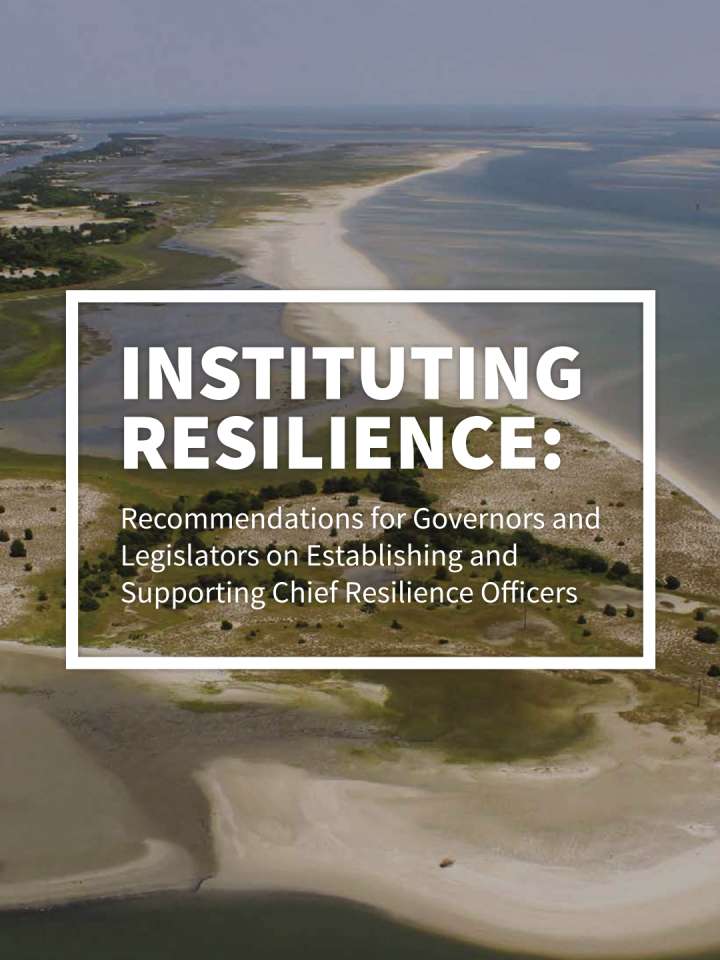Instituting resilience: Recommendations for governors and legislators on establishing and supporting chief resilience officers
This report outlines specific recommendations for how governors and legislatures can establish and support Chief Resilience Officers (CROs) to meet the challenges of a changing climate. Due to the growing importance of this coordinating position in state government, there has been a steady increase in the number of CROs across the country. These CROs have been created by executive orders as well as through legislation; and CROs have been situated in governors’ offices, environmental agencies or public safety agencies. Importantly, whether through a governor’s office or legislature, creating CROs has proven to be bipartisan with governors and legislators of both parties working to establish CROs.
The recommendations this report gives for governors and legislators include, among others.
- Regardless of where the CRO position resides (state agency or governor’s office), gubernatorial support is critical for providing the CRO with the authority to engage and meaningfully collaborate across all state agencies, and with legislators and stakeholders.
- With the CRO as the “hub” of state resilience efforts, each individual agency should have a point of contact who has the support of agency leadership and authority to work directly with the CRO.
- Legislation can provide permanency and continuity for CRO positions while also codifying the intention and outcomes the state expects.
The recommendations this report gives for Chief Resilience Officers include the following:
- Create and maintain a community of practice for CROs where they can continue to learn from one another.
- Create an in-state community of practice with diverse stakeholders (business, academia, NGOs, faith communities, environmental justice communities, etc.) to not only inform the work of the CRO but document the work, as well.
- Work with and support local jurisdictions.
Explore further
